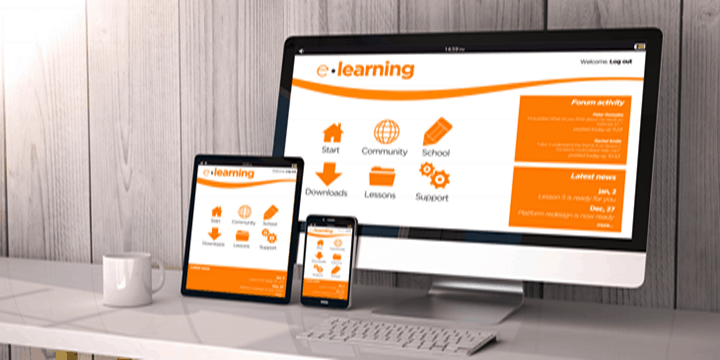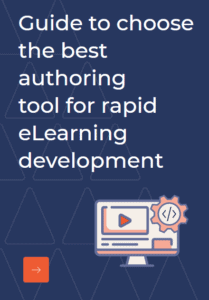You wake up in the morning, have a quick look at the messages and emails on your mobile phone, freshen up, surf through the news on your tablet while having breakfast, login to your desktop/laptop check your schedules and tasks. Well this is almost how the normal corporate generation works today. If you are more into technology then just throw in a smartwatch and even a VR device into the mix, and that's life in the 21st century or rather in the multi device ecosystem. From an eLearning solution provider's perspective, this means that most of the users/learners we create eLearning for fall under this category.
With that on mind let's have a look at how the evolution of devices has really affected eLearning. In the beginning eLearning was essentially nothing but learning on desktops and constituted mostly of text and simple image-based courses that later were modified into courses with basic interactivities, video integration etc. mostly designed on Flash. But, with the coming of Tablets the story changed a bit, Flash has some issue in rendering on few new operating systems and then came in Mobiles and Tabs. The situation just got complex. Now, not had the number of devices increased, there was also a huge variation in size, operating systems, browser types and hardware of course plus the changing approach towards eLearning. This was the advent of a Multi device ecosystem and a new direction for eLearning.
Today's learners tend to use different devices and also tend to switch between them, a trend better known as multi screening. The learners usually start a task on one device and tend to switch to a different device to complete it. The term was first introduced by Google in 2012, and according to the new Google Consumer Barometer, "In 2012, only 8% of people used three screens in Sweden - in 2015 that has risen to 44%. In Germany 24% of people now use three screens, compared to just 3% in 2012." Which is why eLearning today not only has to be device-agnostic, but also should give the learners a sense of continuity.
To begin with we need to understand that having multiple devices in the mix means analyzing the user behavior in terms of device usage, the organizational requirements and most importantly the kind of experience that you wish to deliver. Michal Levin in her book 'Designing Multi Device Experiences: An Ecosystem Approach To User Experiences Across Devices', mentions three types of learning experiences- Consistent, Continuous and Complementary. Each experience here depends on the kind of output or the type of users involved.
An experience is said to be Consistent if the same kind of interface is replicated across all devices. In most cases we talk about Responsive eLearning considering it to be synonymous to multi device. However, it is nothing but a Consistent learning experience that is delivered here. Responsive design makes the necessary changes to fit on different screen sizes and interaction models and has many benefits over other design types.
A Continuous experience is created when an action continues across different devices. Take bookmarking feature for instance- you can start on one device, bookmark it and continue it from the same point on any other device without actually breaking the flow, as Michal Levin puts it, "devices 'pass the baton' to one another until the user reaches her information goal or completes the desired activity".
A Complementary experience is created when the action on one device complements that of the other. Different devices (minimum of 2) have to work together as a group to deliver this kind of learning experience and involves two types of device relationships: Collaboration and Control. A good example of collaboration is the game Pad racer - here the iPhone becomes a wireless game controller and iPad acts as the racetrack. Using your mobile device as a universal remote is an example of Controlled relationship.
Based on the kind of multi device learning environment you wish to create; the eLearning design should be such that it delivers either of the three learning experience. However, multi device learning design is not as easy as it sounds - there are several design, development and testing considerations involved, which we shall elaborate in our future blogs.
Hope this gives you an overview of what multi device eLearning should be like. Please leave any of your queries or valuable inputs in the comment box below.



